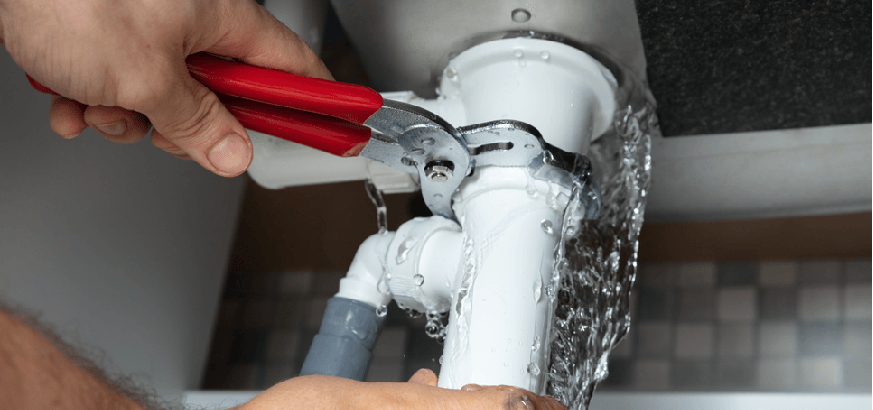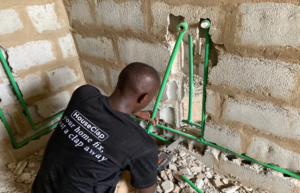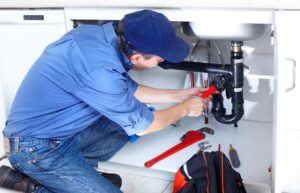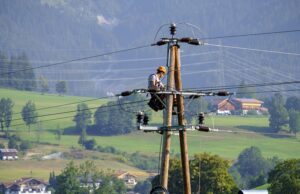Water Damage Restoration Vs. Water Mitigation: What’s The Difference?
5 min read
Water damage can wreak havoc on homes and businesses, causing extensive harm to the structure and its contents. Understanding the nuances between water damage restoration and mitigation is crucial for efficiently addressing and resolving such issues.
While restoration focuses on returning a property to its pre-damaged state, mitigation aims to minimize further damage through prompt action. Homeowners grappling with water-related issues often find themselves at a crossroads, deciding which path to take. In such situations, consulting professionals specializing in water damage services is paramount.
Plumbing Squad, a reputable service provider, stands out in this domain with expert water damage restoration services tailored for:
Expert water damage restoration in Torrance, CA
Top-notch water damage restoration services in Long Beach, CA
Top-tier water damage restoration services in Garden Grove, CA
High-quality water damage restoration services in Irvine, CA
Ultimately, this comprehensive guide will delve into the key distinctions and explain why these processes are essential for property owners.
Water Damage Causes
Familiar Sources of Water Damage
Water damage can originate from various sources, including leaks, floods, and plumbing issues. Leaky roofs, burst pipes, and malfunctioning appliances are common culprits. These sources often lead to undetected water accumulation, causing significant long-term damage. Understanding these sources is crucial for effective prevention and timely intervention.
Impact of Various Water Damage Causes
Different water damage causes result in distinct consequences. While leaks may slowly weaken structures, floods can cause rapid and severe damage. The impact ranges from structural harm to the growth of mold and mildew, posing health risks. Recognizing these variations is critical to tailoring restoration efforts effectively.
Understanding the Need for Restoration and Mitigation
Restoration and mitigation are necessary to prevent further damage and safeguard occupants’ health. Restoration focuses on returning the affected area to its pre-damage condition, while mitigation aims to minimize the impact of the initial damage. Recognizing this tandem need is essential for a comprehensive and effective response to water damage incidents.
Water Damage Restoration
Definition and Scope of Restoration
Water damage restoration involves repairing and restoring structures and contents affected by water intrusion. This encompasses a range of activities, from water extraction and drying to repairing damaged materials. The primary goal is to return the property to its pre-damaged state promptly.
Critical Objectives in Restoration Processes
Restoration’s primary objectives are swift response, thorough assessment, and efficient repair to minimize downtime. Timely action helps prevent secondary damages such as mold growth and structural deterioration. Prioritizing these objectives ensures a seamless and effective restoration process.
Specialized Techniques in Water Damage Restoration
Water damage restoration employs specialized techniques, including moisture detection, dehumidification, and structural drying. These techniques vary based on the extent and type of damage. Utilizing state-of-the-art equipment and industry-proven methods is crucial for achieving optimal results.
Water Mitigation Explained
Defining Water Mitigation
Water mitigation focuses on reducing the initial impact of water damage by taking immediate action. This involves prompt water extraction, dehumidification, and preventative measures to stop further damage. The goal is to limit the extent of the damage and prevent secondary issues.
Focused Goals in Water Mitigation
The primary goals of water mitigation include minimizing property damage, preventing mold growth, and safeguarding occupant health. Mitigation efforts concentrate on addressing the immediate aftermath of a water-related incident. Prioritizing these goals is paramount for effective mitigation.
Immediate Steps Taken in Water Mitigation
Upon identifying water damage, immediate action is essential in mitigation. This involves extracting standing water, deploying drying equipment, and implementing protective measures. Swift response significantly reduces the extent of damage, making the subsequent restoration process more manageable.
Differences in Approach
Timing and Urgency in Restoration
Restoration focuses on the comprehensive repair of damages, often following mitigation. The emphasis is on thoroughness rather than immediacy. However, prompt initiation of the restoration process remains crucial to prevent additional complications.
Proactive Measures in Mitigation
Mitigation involves immediate and proactive measures to limit damage. It prioritizes swift action to prevent the escalation of issues. Unlike restoration, mitigation aims to control the situation early, reducing the overall impact.
Collaboration Between Restoration and Mitigation
The collaboration between restoration and mitigation is seamless. While mitigation addresses the immediate aftermath, restoration takes over to comprehensively repair and restore the property. This synergy ensures a well-rounded approach to water damage recovery.
Assessment and Evaluation
Initial Inspection in Water Damage Restoration
The restoration process begins with a thorough initial inspection. This involves assessing the extent of damage, identifying affected areas, and planning the restoration strategy. The initial inspection lays the foundation for a targeted and efficient restoration effort.
Identifying Risks and Potential Damages in Mitigation
In water mitigation, identifying risks and potential damages is a priority. This includes assessing the structural integrity, potential mold growth, and health risks associated with water damage. Understanding these factors guides mitigation efforts for optimal results.
Collaborative Efforts for Comprehensive Assessment
Collaboration between restoration and mitigation teams ensures a comprehensive assessment. Combining insights from both stages gives a more accurate understanding of the overall damage. This collaborative effort is instrumental in formulating a holistic recovery plan.
Equipment and Technology
Specialized Tools in Water Damage Restoration
In the arsenal of water damage restoration professionals, specialized tools are indispensable for accurate assessment and efficient restoration. Moisture meters play a crucial role in gauging the saturation levels of affected areas, guiding technicians to potential hidden pockets of moisture. Infrared cameras visually represent water damage, making it easier to pinpoint affected regions. Hygrometers measure humidity, aiding in determining the optimal conditions for drying. These tools collectively empower restoration experts to navigate complex water damage scenarios precisely.
Cutting-edge Equipment for Effective Water Mitigation
In the realm of water mitigation, staying ahead necessitates the adoption of cutting-edge equipment designed to expedite the restoration process. Technological innovations, such as thermal imaging and infrared cameras, have revolutionized the identification of water damage. These tools allow for a swift and accurate assessment of the affected areas, guiding technicians in prioritizing mitigation efforts.
Technological Advancements in the Industry
Technological advancements have ushered in a new era in the water damage restoration industry, redefining how professionals approach their work. Automated monitoring systems and smart sensors provide real-time data on moisture levels, enabling proactive responses to potential issues. This real-time information empowers technicians to make data-driven decisions, mitigating damage swiftly.
Cost Considerations
Budgeting for Water Damage Restoration
Budgeting for water damage restoration is a critical step in the recovery process. The extent of water damage, the type of affected materials, and the necessary restoration measures all influence the overall cost. Property owners should be aware of potential hidden costs, such as specialized equipment or structural repairs, that may arise during the restoration process. Creating a comprehensive budget allows for better financial planning and ensures that all aspects of the restoration are adequately addressed.
Financial Planning for Water Mitigation
Financial planning for water mitigation involves a strategic approach to allocating resources for immediate and future needs. Property owners should consider the potential financial impact of water damage and devise a plan that covers both the mitigation process and potential long-term consequences. This planning includes allocating funds to acquire cutting-edge equipment, professional services, and structural repairs.
Balancing Costs with Long-Term Benefits
Balancing costs with long-term benefits is critical in the aftermath of water damage. While cost-conscious decisions are essential, property owners should also assess the long-term implications of their choices. Even if it involves higher upfront costs, investing in thorough water damage restoration can prevent future structural issues and potential health hazards like mold growth.






